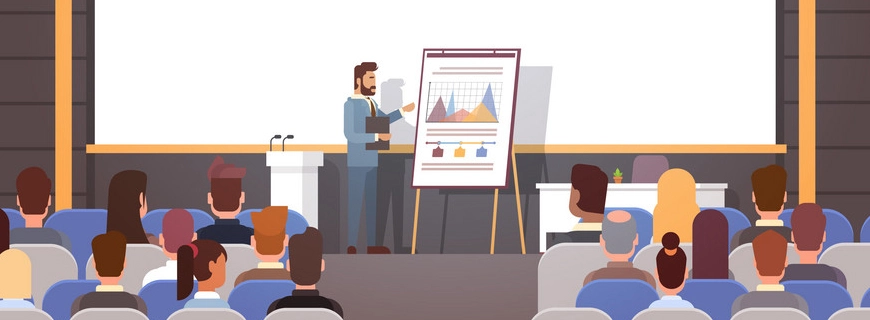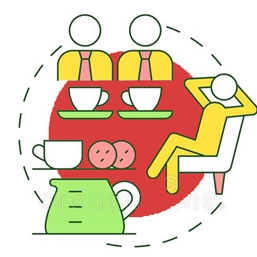
Conveying Your Message
A story well told will make any presentation stronger.
– William Hendricks
Introduction
During the course of a presentation, you need to be aware of how things are going. Are people starting to lose interest? Do they need a break? Do you need to do something different to change the pace?
When it’s time to wrap up your presentation, you need to remind people of your basic message. You hope that a week from now, if someone asked the members of your audience they would be able to recall what your presentation was all about.
This is something that depends greatly upon the audience, but as you have no control over their reactions your job is simply to ensure that you get your message across as persuasively as you possibly can.
You will probably be given an allotted time to deliver your presentation, and it is a good idea to take this time and look at all the elements you need to cover. By doing this you can then divide the allotted time into shorter spells in which you can cover the topics in hand.
Adapting on the Spot
Here are some adjustments you could make if the audience seemed to be losing interest:
Ask questions.
Have a member of the audience come to the front of the room and help you with a demonstration.
Conduct an informal poll (“How many people think that…?”).
Introduce a brief, interesting digression (go off topic for two or three minutes).
Use a brief anecdote (preferably one that has something to do with your topic).
Each of the above adjustments has the advantage of offering a change of pace, and if your audience has given the appearance of losing interest these can turn that around by reminding the audience that there is a reason for them to listen.
Some audiences react to different things than others, and you will normally be able to tell what it is that your presentation lacks by reading the faces of your audience. If they look slightly pained and confused, it may be that you are speaking from a vocabulary with which they are unfamiliar. If they simply look bored, then it may be that you are not telling them anything new.
Involving the audience is something which, done carefully, can get a presentation right back on track when it has been threatening to lose their attention. From something as simple as not wanting to be called up to the front and exposed for their failure to pay attention, to something as enjoyable as the ability to participate in a genuinely interesting diversion, this will cause people to sit forward and become more interested in proceedings.
It may also be that you have been speaking excessively formally, and have appeared distanced and humorless. Obviously, a lot has gone into this presentation and you may well consider it to be “no laughing matter”, but a certain lightness of touch can make the presentation flow better and involve the audience more. It is wise to avoid disrespectful humor, but some light self-mocking can go a long way to getting the audience on your side.
Identifying When Breaks Are Necessary
When you tell people to take a break, tell them exactly when you plan to start again. Fifteen minutes is a typical length for a break. The shorter presentations – those under an hour, will generally not require a break, but if the presentation edges towards an hour and a half it may well be that offering a break in the middle can be the wisest thing to do.
Although people will sit for upwards of two hours in a movie theater, there is a clear difference between a movie and a presentation. Atmospherically, dynamically and in many other ways it is much easier to sit through a film of a certain length than it is to sit through a presentation of the same length.
If you do give a break to the audience at a presentation, it is essential to specify that you will begin the presentation again at a set time and impress upon them the importance of their being back at the right time.
If people stay out beyond the allotted time for a break then it simply results in the recommencing of the presentation being delayed, and gives a very bad impression. If there are some stragglers who take a little bit more time to arrive back, then it is beneficial to simply have a short, informal conversation with the people who have arrived on time or stayed in the auditorium during the break.
This can be a good way of gauging how the presentation is being received, and allow you to get an impression for what your audience is like.


Concluding and Winding Down
Sometimes a speaker will end a presentation with a question and answer session. If you do this, don’t end the presentation with your answer to the last question. It might have little to do with your main point. Instead, after you have answered the last question, say something like:
“That’s all we have time for. If there is one thing I hope you will remember from this presentation, it’s…”
Doing this will end the presentation in a neat way, and pull together the strands of the previous period of time. It will also allow you to reinforce the central point of your presentation. As people leave, thank them for attending and say goodbye to them.
If people leave the presentation on a positive note they are more likely to remember what has gone before in a positive light. Whatever else you do, you should ensure that if people have follow-up questions after the event they can address them to you in whatever way is possible.
Practical Application
Christina reached the end of her question and answer session. She saw that a few participants were gathering their things. She thought, ‘Oh, no! Did I accidentally give them the cue that the presentation is over?’ Christina had to think quickly on her feet.
She cleared her throat and said, “If I could just leave you with one thing that I hope you will remember from this presentation…”
The audience stopped what they were doing, and she had their full attention. Christina blanked for only a moment, and then she remembered that if possible, presentations should come full circle and end with the same point made from the beginning.
She smiled. “It would be that in order to analyze, prioritize, and energize you need to…”
The crowd said, “Optimize.”
Christina grinned. “Exactly! Thank you for coming.”
All her hard work paid off. The presentation ended successfully.





